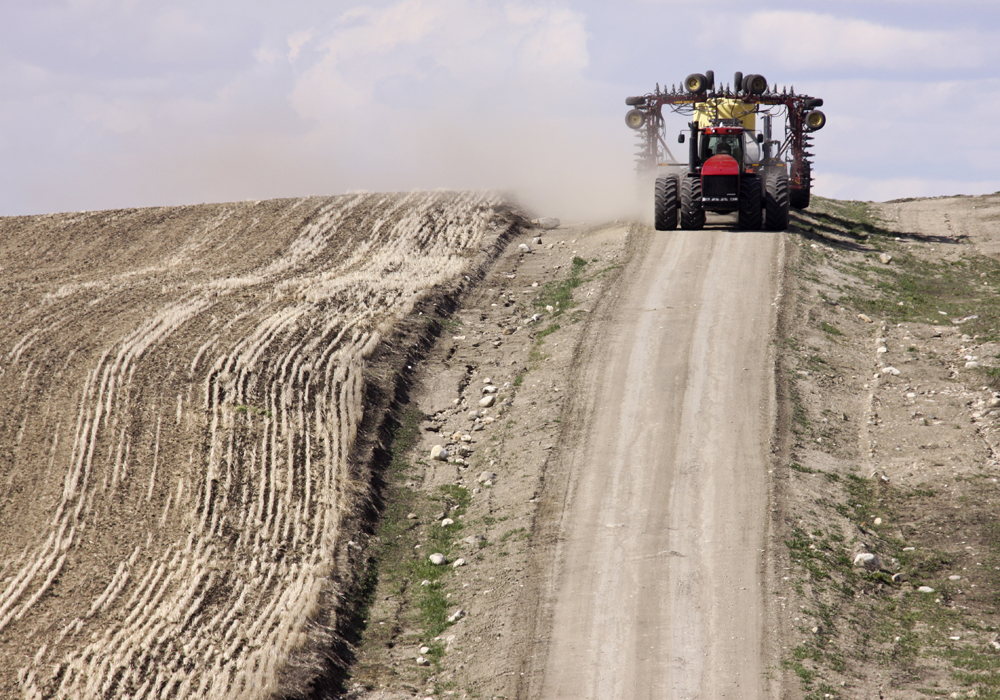Last fall was tough and winter wasn’t much better, but producers take a positive approach as they prepare for seeding
VANCOUVER — Despite a nightmare 2019 growing season, a ghastly winter and ongoing problems, farmers are turning their attention to the future.
They’re switching their focus to the next crop that will keep them busy and give them hope.
“Every year we look at it as another chance. It’s another chance to go out and seed our crops,” John Sandborn, a Benito, Man., farmer and member of the board of directors for the Canola Council of Canada, said during the Canadian Crops Convention.
That attitude was common among farmers at the convention, which brings together the Canola Council and the Canada Grains Council. Amid a plethora of problems, farmers and the rest of the crops industry are hoping to keep Canada’s production and exports growing.
Read Also

Soybean market still figuring out implications of China-U.S. pact
Soybean futures had a muted reaction to the U.S. trade deal with China as the market tries to figure out the nuances of the deal.
“My gosh, the resilience of this industry,” exclaimed Bernie McClean, a Glaslyn, Sask., farmer who chairs the Canadian Canola Growers Association.
Farmers were feeling on the ropes through the winter, but having another growing season within sight is helping lift spirits.
“In a good year it’ll be a lot easier to maintain a positive attitude,” said McClean.
Farmers always face challenges and obstacles, but 2019-20 has been particularly trying.
A second year in a row of drought suppressed thousands of farmers’ crop yields. Whatever managed to grow was then, in large areas, hit by saturating rains and snow at harvest time, causing many crops to come off wet, be downgraded, and leaving many crops still in the field.
While farmers were coping over the winter with tough grain in their bins, they had to watch the Chinese ban on most of Canada’s exports carry on into a second year.
A railway strike crippled grain shipments during what is usually one of the best times for prairie grain movement. Then rock slides and other conditions caused rail service to slip further.
Finally, an outbreak of railway blockades by anti-pipeline activists made much grain movement seize up.
Farmers now have to clean up remaining crops and catch up with the field preparations many couldn’t complete last fall.
That has many managing high stress levels.
“There are going to be farmers out there that are very scared,” said Gerry Hertz, an Edenwold, Sask., farmer.
“After a couple of bad years in a row, they’re on the edge. You’re walking on a tightrope and something like a blockade can push you off.”
Yet the cyclical nature of farming, with each crop year bringing another chance to have a good year, is helping some limp through.
“A good crop would alleviate a lot of that apprehension that’s out there,” said Hertz.
The past two years of struggle have come in the middle of the Canola Council of Canada’s aggressive attempts to boost Canada’s canola production to 26 million tonnes by 2025, or an average of 52 bushels per acre.
Production has suffered and the previous growth trend has been knocked, but despite the challenges, many of the elements of the 2025 plan are still intact.
“The fundamentals of the industry are very strong,” said canola council president Jim Everson, noting growing world demand for vegetable oils and the success of Canada’s exporters and crushers in finding new markets for canola previously destined for China.
“There’s a lot to be optimistic about.”
Indeed, some at the convention remarked that the plethora of problems might have been expected to cause even lower prices and much lower export volumes. Yet new buyers were found and existing customers often bought more.
Brian Treacy of Bayer Canada said farmers’ resilience this winter made him confident about the future.
“I couldn’t be more excited about the prospects for Canadian agriculture this year,” said Treacy during the convention.
“You’re not going to find another group of people who are more resilient, innovative and passionate as the people in this room.”
Sandborn said getting a year of anything near normal weather would let farmers focus on crop management, which is a challenge they can control.
If some of Canada’s trade challenges, like those with China, India and Europe, got sorted out, that would add another element of recovery.
And if governments provided farmers with regulatory support, like an expanded biofuel inclusion level, as seen recently in Manitoba, further stability would strengthen the sector.
Farmers deserve a break this year, after what they have suffered for two years.
“The mental health aspect is real,” said Sandborn.
“If you’ve had a couple of bad years and you live in a small rural community, you can feel isolated.”
That’s why getting on to the next crop is so important for so many farmers. It’s a chance to once more tackle something they can have an impact upon.
“We like farming. We like the independence. It’s just something you work your way through,” said Sandborn.
















